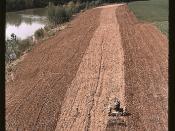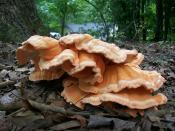Plants and Fungi Fungi and Plants may not seem to have anything in common, but you might be surprised to know that they do have something in common. Some fungi are even attached to plants. This is called mycorrhizal.
Mycorrhizal is an intimate association between soil fungi and plant roots. A mycorrhizal relationship is a symbiosis, but not a parasitic relationship. A parasitic relationship is that between a parasite and a host. A symbiosis is a close relationship between two organisms. In mycorrhizal both organisms benefit instead of just one. One example of the benefit of the plant is that when the fungus is on the roots the plant can take in more nutrients and water by the fungus attached to the roots. An example of how the fungus benefits is that the fungus get carbon and a food source from the carbohydrates produced during photosynthesis.
Other benefits that plants get are faster growth, drought resistance, and protection from bacteria.
Another benefit is the improvement of soil. Some other benefits of this relationship are reduction in transplant shock, drought stress, plant disease, plant losses, and need for fertilizer. Other benefits of this are longer survival, ability to absorb more water and nutrients, and larger root growth.
Many scientists have studied this relationship. They set up controlled experiments and recorded the results. Many things recorded included large differences in the growth of the plants between the attached to fungi and the plants by themselves. The plants and fungi lived better attached to each other then alone. Also, when the experiment was done in heavily fertilized soil the growth response was either no increase or less.
Using mycorrhizal fungi is now an everyday occurrence. People even have injections of this fungus. Some gardeners want a more organic way of getting these...

